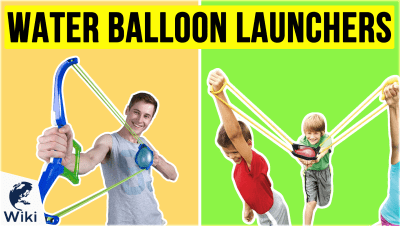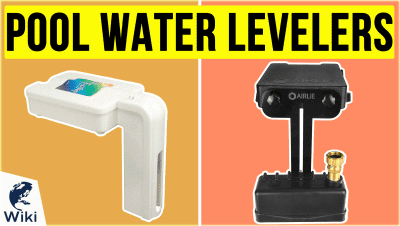7 Organizations That Protect & Restore Bodies of Water
Water is essential for human life, which is why it's important for us to take care of lakes, rivers, bays, and other bodies of water. When these aquatic ecosystems get polluted, over-fished, or otherwise exploited, it can have disastrous consequences that affect not only algae and frogs, but humans as well. Organizations like the ones listed here protect these precious resources and work to restore damage that has already been done. This video was made with Ezvid Wikimaker.
Groups That Preserve Bodies Of Water
| Organization | Location | Mission |
|---|---|---|
| Alliance for the Great Lakes | Chicago, IL | Conserve and restore the world's largest freshwater resource using policy, education, and local efforts |
| Elizabeth River Project | Portsmouth, VA | Restore the Elizabeth River to the highest practical level of environmental quality through government, business, and community partnerships |
| Save The Bay | Providence, RI | Protect and improve Narragansett Bay through advocacy, education, and habitat restoration and adaptation |
| Adopt A Stream Foundation | Everett, WA | Teach people how to become stewards of their watersheds through education, stream and wetland technical assistance, and development of the Northwest Stream Center |
| Lake Pontchartrain Basin Foundation | Metairie, LA | Drive environmental sustainability and stewardship through scientific research, education, and advocacy |
| Sarasota Bay Estuary Program | Sarasota, FL | Restore Sarasota Bay by improving water quality and enhancing the natural resources of the area |
| Friends of Gualala River | Gualala, CA | Share common concerns and research regarding the welfare of the Gualala River, its estuary and habitat |
Fascinating Facts About Water
- The only substance that naturally exists in solid, liquid, and gas form at temperatures normally found on Earth
- Called the "universal solvent" by scientists because it dissolves so many substances
- Air pressure affects its boiling point
- Covers nearly three quarters of the earth's surface
- 97% is found in the oceans
- Most of the remaining 3% is unavailable to humans: too far underground, trapped in glaciers and ice caps, or too heavily polluted
- Less than 1% of water on Earth is available fresh water
Where Water Is Found On Earth
According to the U.S. Department of the Interior
| Location | Percentage of Earth's Water |
|---|---|
| Oceans | 97.2% |
| Ice caps & glaciers | 2.0% |
| Groundwater | 0.62% |
| Freshwater lakes | 0.009% |
| Inland seas & salt lakes | 0.008% |
| Atmosphere | 0.001% |
| Rivers | 0.0001% |
The Science Of Water
In Depth
Rivers, streams, lakes, and bays all play an important role in their ecosystems, and their overall health is vital for humans and animals alike. Unfortunately, they face an increasing number of dangers to their continued existence, from pollution and industrial development to climate change and invasive species. If you are interested in learning about the work being done in their defense, then here are, in no particular order, seven organizations that protect and restore bodies of water.
At #1 is the Alliance for the Great Lakes. With headquarters in Chicago and additional offices in Buffalo, Cleveland, Detroit, and Milwaukee, this nonprofit aims to protect the health of the Great Lakes for both people and wildlife through a combination of advocacy, volunteering, education, and research. In recognition of its dedication, it has earned the highest possible rating of four stars from Charity Navigator for the past eight years.
Because the bodies of water it safeguards face so many threats, the Alliance runs numerous initiatives at once. To combat invasive species, it works to separate the Great Lakes and the Mississippi River Basin, while also cleaning up ship ballast tanks. Furthermore, it fights to keep the waters free of plastics through its Adopt-a-Beach clean-up program and its education efforts, which focus on reduced consumption of plastics. Those who wish to support the Alliance for the Great Lakes can make a tax-deductible gift or check out its online Action Center to keep up to date on the latest initiatives.
To combat invasive species, it works to separate the Great Lakes and the Mississippi River Basin, while also cleaning up ship ballast tanks.
In the #2 spot is the Elizabeth River Project. A coalition of individuals, businesses, schools, and government, this nonprofit works to restore the Elizabeth River, a tributary of the Chesapeake Bay. Through improving the quality of water and its shores, the organization hopes to create a community where citizens, wildlife, and the economy all thrive, thereby preserving the environment's health for future generations.
The Project operates the River Stars Program, which encourages homes, schools, and businesses to commit to bettering the river and its surrounding areas. To date, over 5,000 homes have participated in the program. In addition to these efforts, the nonprofit runs the renewable energy-powered Learning Barge, the world's first floating wetlands classroom, where more than 70,000 people have been educated. If you are interested in learning more about this organization, you can sign up to receive its newsletter or attend one of its events, like the annual Riverfest.
Coming in at #3 is Save The Bay. Founded in 1970, this nonprofit strives to improve and protect Narragansett Bay, with the goal of making the water fishable, swimmable, and accessible to all. In support of its mission, Save The Bay focuses on three main areas: improving water quality and reducing pollution, protecting wildlife and habitats, and ensuring government oversight and influencing public policy.
In support of its mission, Save The Bay focuses on three main areas: improving water quality and reducing pollution, protecting wildlife and habitats, and ensuring government oversight and influencing public policy.
Save The Bay keeps active through its educational efforts. The Bay Center, located in Providence, is a living classroom of over 15,000 square feet for the group's marine science programs, featuring a series of walkable outdoor trails. The organization offers afterschool programming both inside and outside the classroom, often using Narragansett Bay and its wildlife as teaching points. It also has a fleet of three custom-built education vessels, which provides students a hands-on learning opportunity. Those who want to get involved with Save The Bay can become official members or hold their own shoreline cleanup through a mobile app.
At #4 is the Adopt A Stream Foundation. Established in 1985, A.A.S.F. encourages citizens to become stewards of their watersheds, with a particular emphasis on ensuring that rivers and streams in the Pacific Northwest remain habitable for salmon, trout, steelhead, and other wildlife. The organization also strives to be of service by providing clean drinking water and picturesque outdoor spaces where people can relax.
A.A.S.F. takes a three-pronged approach to its mission, focusing on creating environmental educational materials, providing stream and wetland technical assistance, and developing its Northwest Stream Center, an outdoor learning experience featuring a nature trail and a trout stream exhibit. Elsewhere, its Streamkeeper Academy offers academic lectures open to the public, covering topics in natural resource science. If you are interested in supporting this foundation, you can sign up to become a docent at the center or purchase a membership.
Elsewhere, its Streamkeeper Academy offers academic lectures open to the public, covering topics in natural resource science.
In the #5 spot is the Lake Pontchartrain Basin Foundation. Founded in 1989, LPBF promotes environmental sustainability and stewardship in the Lake Pontchartrain Basin, a watershed of 10,000 square miles encompassing much of southern Louisiana. This nonprofit monitors water quality in the region and investigates coastal issues, using a mix of scientific research, education, and advocacy to advance its mission.
Established in 2005, LPBF's Coastal Sustainability Program comprises a team of scientists that works to safeguard the region's coasts through a comprehensive habitat management plan and the "multiple lines of defense" strategy. In addition, its Education Department, operating at LPBF's New Canal Lighthouse and offsite, runs field trips and a swimming program. The foundation also publishes a series of informative public service announcements. If you want to get involved with the Lake Pontchartrain Basin Foundation, consider taking a guided tour of its museum or purchasing items from its gift shop.
Coming in at #6 is the Sarasota Bay Estuary Program, established in 1989 when the body of water was named an estuary of national significance by Congress. Since then, S.B.E.P. has channeled its efforts into three main areas: water quality enhancement, habitat restoration, and public stewardship. Over the past thirty years, more than 1,600 acres of intertidal and freshwater wetlands have been restored in the area.
Since then, S.B.E.P. has channeled its efforts into three main areas: water quality enhancement, habitat restoration, and public stewardship.
Specific efforts that S.B.E.P. undertakes include wastewater treatment and reclamation, stormwater treatment and prevention, restoring shoreline and wetland habitats, and increasing and protecting fish populations. S.B.E.P. also publishes educational resources to encourage citizens to become active participants in the maintenance of their local ecosystems, promoting bay-friendly landscaping and rainwater harvesting. Those who are interested in supporting the Sarasota Bay Estuary Program can become Sarasota Bay Guardians or sign up to take kayak eco-tours.
Last but not least, at #7, is Friends of Gualala River. Established in 1992 after concerns over timber harvesting, F.O.G.R. is a grassroots nonprofit dedicated to protecting and preserving the Gualala River, which flows in Sonoma and Mendocino Counties in California, and its watershed. Affiliated with the Redwood Coasts Watershed Alliance, F.O.G.R. works against a number of threats to the Gualala River and its environs, including industrial water diversion, destructive logging, pesticide pollution, and invasive non-native species.
In support of its mission, F.O.G.R. often undertakes various forms of advocacy. In 2019, for instance, it worked to pressure state agencies to commit to safeguarding watershed habitats from timber harvesting plans. It has also supported the formation of a government-owned Gualala River Park, a move that would conserve the floodplain and protect it from future development. If you want to get involved with Friends of Gualala River, you can join as a member or sign up as a volunteer.





















